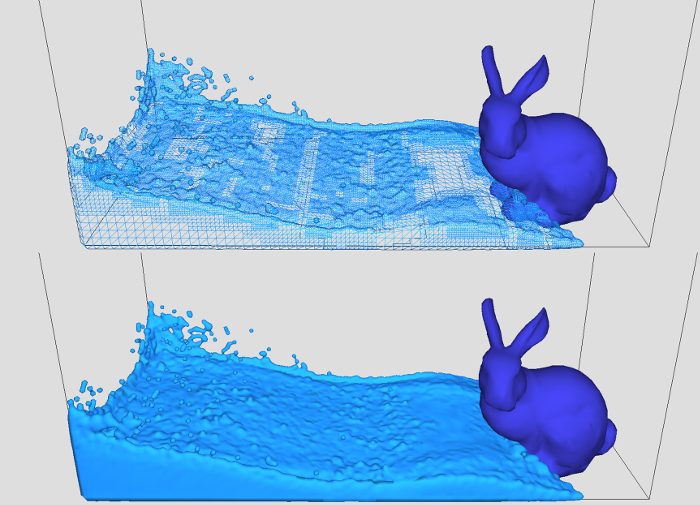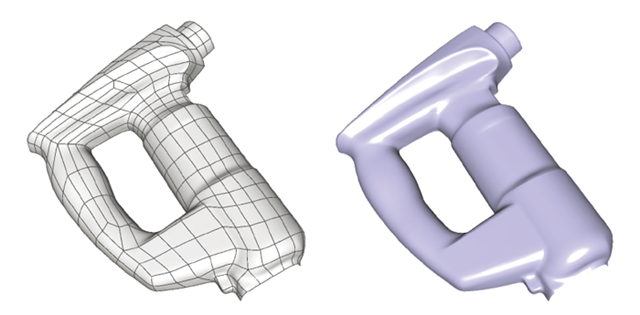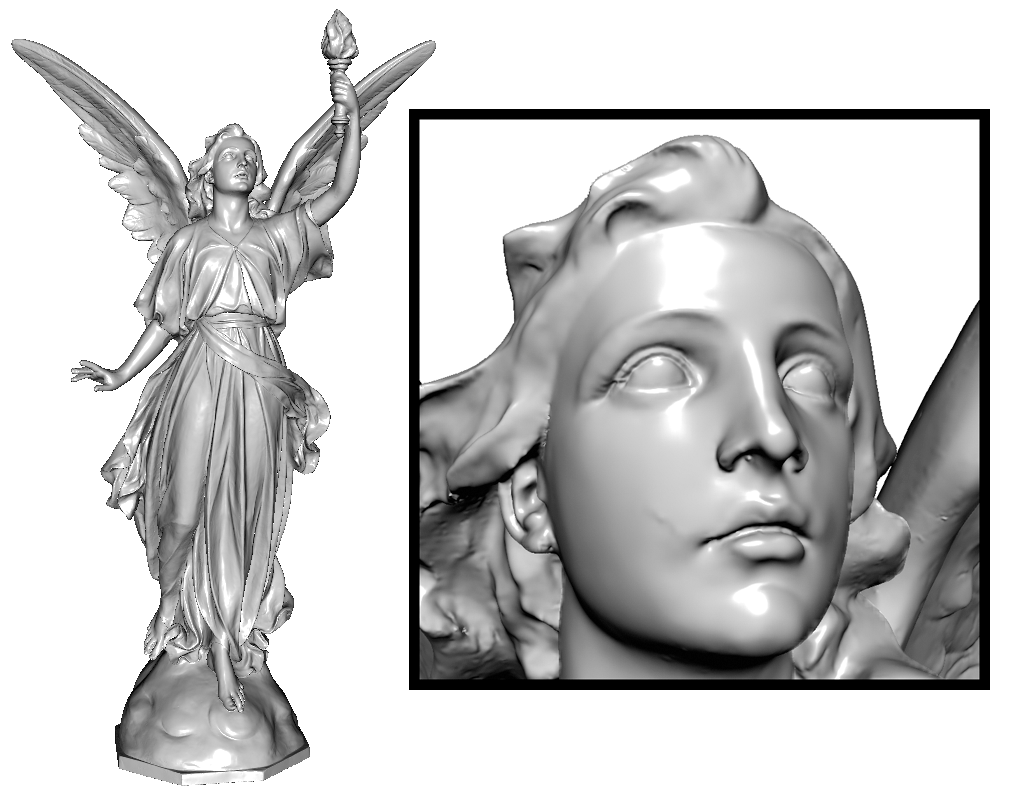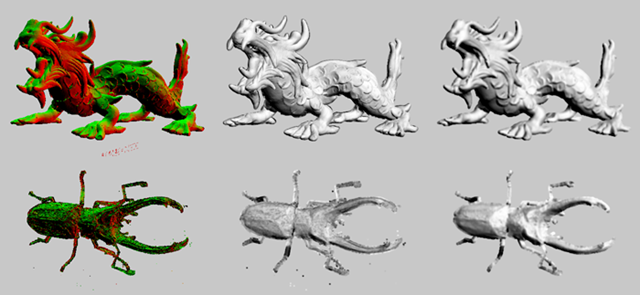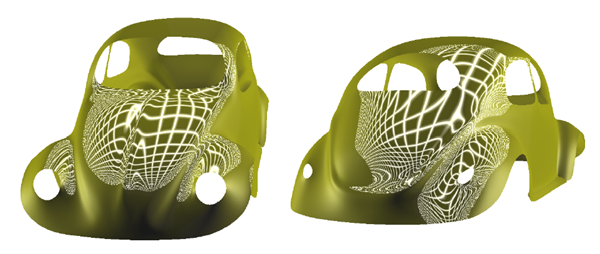We propose a GPU-based adaptive surface reconstruction algorithm for Smoothed-Particle Hydrodynamics (SPH) fluids. The adaptive surface is reconstructed from 3-level grids as proposed by [Akinci13]. The novel part of our algorithm is a pattern based approach for crack filling, which is recognized as … Continue reading “GPU-based Adaptive Surface Reconstruction for Real-time SPH Fluids”
Category: GPU Computing
Evaluation of Non-Uniform B-spline Surfaces on GPUs
In this paper, we propose a fragment-based evaluation method for non-uniform B-spline surfaces using recent programmable graphics hardware (GPU). A position on a non-uniform B-spline surface is evaluated by the linear combination of both control points and B-spline basis functions. Hence the computa … Continue reading “Evaluation of Non-Uniform B-spline Surfaces on GPUs”
GPU-based Rendering of Point-based Implicit Surfaces
Implicit surface is a well-known surface representation. Geometric details of an object can be represented using less surface primitives than other representations such as polygonal meshes. In this paper, we propose a fast and a direct rendering method of SLIM (Sparse Low-degree IMplicit) surfaces u … Continue reading “GPU-based Rendering of Point-based Implicit Surfaces”
Direct Point Rendering on GPU
In this paper, we propose a method for directly rendering point sets which only have positional information by using recent graphics processors (GPUs). Almost all the algorithms in our method are processed on GPU. Our point-based rendering algorithms apply an image buffer which has lower-resolution … Continue reading “Direct Point Rendering on GPU”
Surface Quality Assessment on GPUs
In this paper, we propose a method of subdivision surface quality assessment by reflection lines on programmable graphics hardware (GPU). Using reflection lines is stable for surface quality assessment because the shapes of these lines are changed according to a slight variance of surface shapes. Th … Continue reading “Surface Quality Assessment on GPUs”
Hardware-Assisted Relief Texture Mapping
Image-Based Rendering by Warping (IBRW) creates three-dimensional scene by deforming several 2D images with depth information. Image-based rendering has an advantage compared to traditional polygon rendering that the rendering time is still constant even if a scene becomes complex. Relief texture ma … Continue reading “Hardware-Assisted Relief Texture Mapping”
